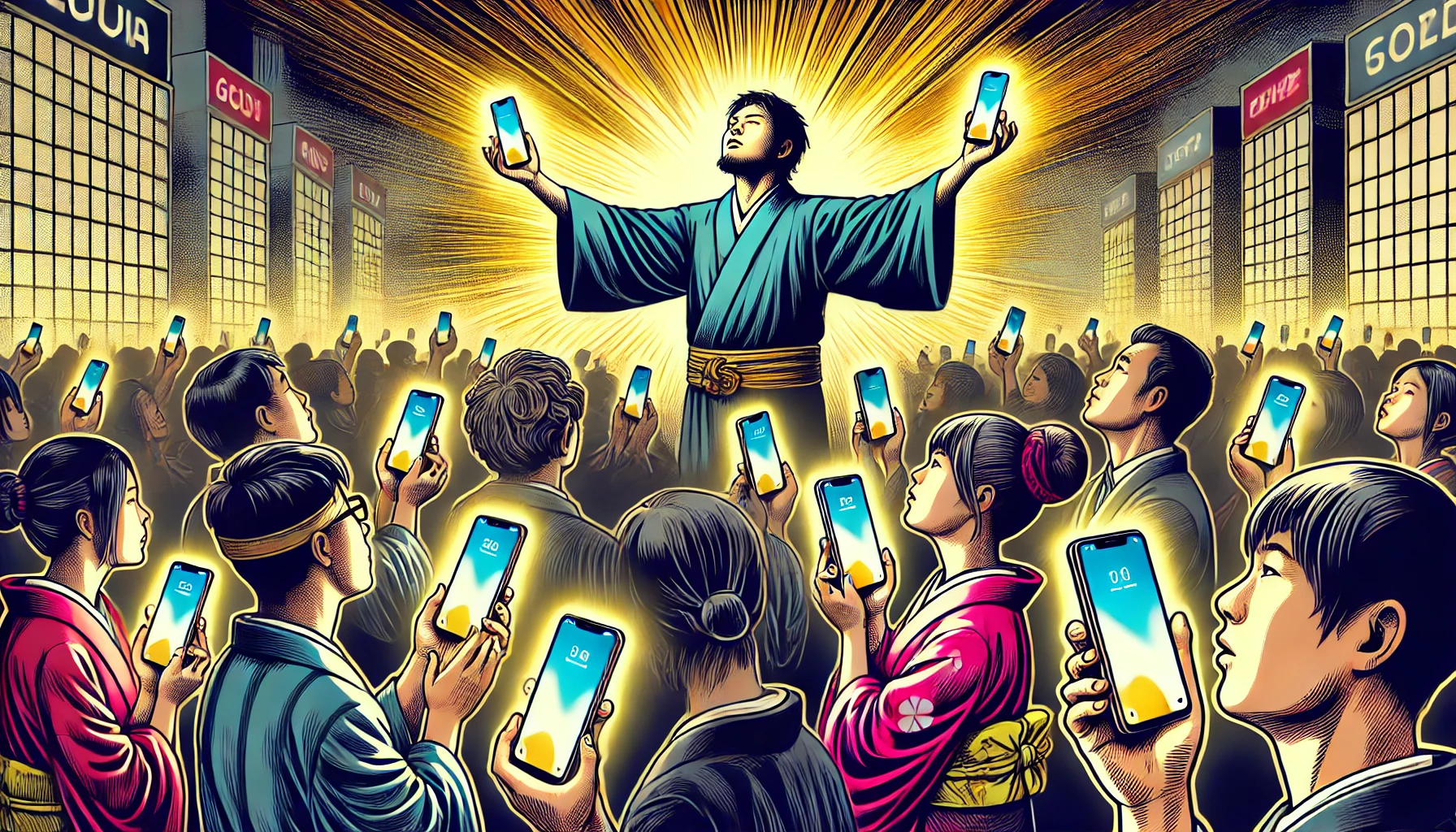
Japan is often described as “iPhone country.” Over half of all smartphone users in the nation choose Apple over any other brand. But with the looming possibility of steep tariffs on Chinese-made electronics—including iPhones—Apple’s dominance could face an unprecedented test. Can Japan’s iPhone loyalty survive a major price surge?
📱 Why iPhones Reign Supreme in Japan
Japan isn’t just a strong iPhone market—it’s the strongest globally. Several unique cultural, historical, and technological factors explain this phenomenon:
1. A Head Start
Apple gained a critical early foothold in Japan. Even before the iPhone, the iPod had already built brand familiarity and prestige. When smartphones emerged, Apple was already the default choice for digital-savvy youth.
2. Android’s Rocky Start
The first Android phones in Japan, many of them made by domestic brands, were plagued with bugs, slow software, and poor battery life. This left a lasting impression: iPhone works. Android? Not worth the risk.
3. Carrier-Centric Sales Culture
In Japan, most people get phones via mobile carriers. These carriers heavily pushed the iPhone, offering steep discounts, 0-yen contracts, and attractive installment plans. For many years, iPhones were not just better—they were cheaper.
4. Trust in Apple’s Ecosystem
From the polished App Store to iMessage and FaceTime, Apple’s products just “work” in a way that resonates with Japanese preferences for simplicity and dependability. Services like Apple Pay are also widely supported by Japanese transit and retail systems.
📊 Who Are the Challengers?
Despite Apple’s dominance, other brands have carved out loyal followings:
- Sony Xperia remains popular among brand-loyal users.
- Sharp AQUOS phones are strong in domestic markets.
- Samsung Galaxy models have gained traction in recent years, especially among Android power users.
Still, no brand has come close to Apple’s national market share, which has exceeded 50% for nearly a decade.
💸 The Tariff Shock: What’s Changing?
New proposed tariffs from the U.S. government on Chinese-made goods could cause global ripples. If enforced, these taxes could significantly raise the cost of Apple’s manufacturing pipeline.
Some analysts warn that flagship iPhone models could see price hikes of 50–70%. In Japan, this could push top-tier iPhones over the ¥300,000 mark—a psychological and financial tipping point.
Japan’s weak yen could worsen the effect. When combined with potential tariffs, it’s entirely possible that even the base models could breach ¥200,000.
🧠 Will Japanese Consumers Still Buy iPhones?
1. Carriers Might Cushion the Blow
Japanese consumers don’t typically buy phones outright. Most upgrade through carriers who offer installment plans, trade-in options, or lease-like structures. If these options remain affordable, the impact on everyday consumers might be muted.
2. Switching Is Inconvenient
Japanese users are deeply embedded in Apple’s ecosystem: photos in iCloud, payments via Apple Pay, messages on iMessage. For many, switching to Android would mean re-learning their phone, migrating data, and losing interconnectivity with family and friends.
3. Brand Status and Identity
Owning an iPhone in Japan still carries a certain prestige. It’s considered reliable, stylish, and secure. Even price-conscious users often aspire to own one, making it more than just a phone—it’s a lifestyle choice.
4. Android Still Faces Stigma
Despite improvements, Android phones are still battling an old reputation for poor quality. For most Japanese users, “Android = complicated” and “iPhone = simple and safe.” This perception will be hard to shake—even with price differences.
🔄 But Cracks Are Forming
Tariffs could create a unique moment of vulnerability for Apple:
- Students and budget users might delay upgrades or switch to cheaper Android models.
- Refurbished markets could boom, as users opt for older iPhones rather than pay full price.
- Android brands have a narrow window to win hearts with sleek UI, strong specs, and targeted advertising.
In particular, Samsung and Google Pixel have improved their designs and Android’s user experience to appeal to iPhone loyalists. If they can also leverage price advantage, they might chip away at Apple’s hold.
🏭 Apple’s Defense: Diversifying Supply Chains
Apple is reportedly accelerating plans to move more production out of China, shifting assembly to India and Vietnam. This could reduce exposure to tariffs and help stabilize prices. However, supply chain shifts are slow and complex—and may not bear fruit in time to avoid short-term price increases.
🔮 What’s Likely to Happen?
- Short-Term: iPhone sales may dip slightly among students and low-income buyers. Android brands might see minor gains, but ecosystem lock-in will keep most users loyal.
- Mid-Term: Apple will likely offer carrier-driven discounts, trade-in incentives, and older-model availability to retain share.
- Long-Term: If Apple localizes more production and currency rates stabilize, Japan’s iPhone supremacy is unlikely to collapse—though more consumers may diversify.
🚀 Final Thoughts
Even in the face of rising prices, Japan’s deep-rooted iPhone culture won’t disappear overnight. Carriers, consumer habits, and Apple’s ecosystem create a powerful moat. But this moment could mark the beginning of subtle shifts:
- Android’s improved image may tempt new users.
- Refurbished markets could expand.
- Japanese users might begin to weigh function and cost more critically than before.
The question is not whether Apple will lose Japan—but whether Japan is finally ready to consider alternatives.



















































